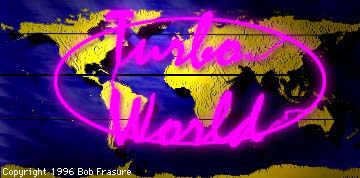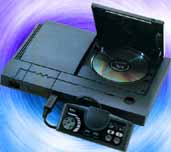During the winter of 1989..
two video game systems were released in America. One of these systems was the
Sega Genesis, and the other was the Turbo Grafx-16. Both of these systems offered
eye popping graphics, extreme speeds, stereo sound, and larger characters than the
previous 8-bit systems. They both had their advantages. The Turbo Grafx-16 offered
512 simultaneous colors, larger sprites, and faster processing while the Sega Genesis
offered a slightly better advertising campaign and a much better sound system. Both
systems did very well, but unfortunatly, the Genesis always had the upper end of
the market. The Turbo Grafx-16 was made by NEC, and was originally made in Japan.
The Japanese version had better games that were designed towards the Japanese market.
Because of this, it went over very well in Japan...and not in America. This system
was known as the PC-Engine in Japan, and nearly everyone
had one. Several different versions of the PC-Engine were offered and they all were
able to use a CD-ROM. The CD-ROM was a very new thing in the video game business
because it offered animated sequences, video with speech, spectacular music, and
multimedia capabilities. The CD-ROM was imported to the U.S.A., but Unfortunately
the Turbo Grafx CD-ROM was too expensive for most people to add on to their system.
Only those lucky enough to have $400 laying around were able to buy one. NEC also
made a portable unit known as the Turbo-Express. It was,
and still is, the ultimate portable video game system. The Turbo-Express offered
true 16-bit power, speed, color, and sound. It also was made to play any games that
were designed for the Turbo Grafx-16, and the Turbo Duo. The Turbo Express also had
an active matrix color LCD screen for maximum speed in games, and a TV attachment
was offered as well. Unfortunately, this was too expensive for most people also.
The Turbo Express came out with an introduction price of $300 and they were extremely
hard to get. I was able to buy one at this cost, but it wasn't very easy. The only
way I was able to do that is by convincing a store clerk to let me buy their display
model. The price dropped down to $200 during the next year.
In the latter part 1991
NEC came out with a new system and design in Japan. This system was designed to
bring CD-ROM power into the hands of all Turbo Grafx-16 fans and many others too.
NEC called it the PC-Engine Duo. It's case size was slightly larger than the other
PC-Engine units because it was designed around the U.S.A.s TV/interference standards.
When it made its debut in the U.S.A. during the fall of 1992, it was known as the
Turbo Duo. The Turbo Duo could play all of the games from the Turbo Grafx-16, the
Turbo Grafx CD-ROM, and all of the new Super CD-ROM games designed especially for
the Turbo Duo. After it was released, many people bought one, and enjoyed it. At
the same time, though, the Sega CD had been released. Because of the dramatic marketing
advantage Sega had over NEC, the Sega CD took over the market. The Turbo Duo was
a superior CD-ROM system in that it offered faster speeds than the Sega CD, and it
also had a specialized extra fast CD-ROM in it for faster loading and better video.
Another nice feature was the 512 colors that it had available to display while the
Sega CD was still stuck with the original 64. One major advantage that people found
by buying the Sega CD was the amount of games that came out for it. For a short while,
the Turbo Duo had many more CD titles, but as the price of the Sega CD dropped and
as Sega’s market got bigger and bigger, the Turbo Duo took its last stand, and was
eventually dropped from the market. Those who were lucky enough to buy a Turbo Duo
had an excellent video game system with some of the top of the line games available
today.
|


 View all of the parts of the
Turbo Duo in the:
View all of the parts of the
Turbo Duo in the:

